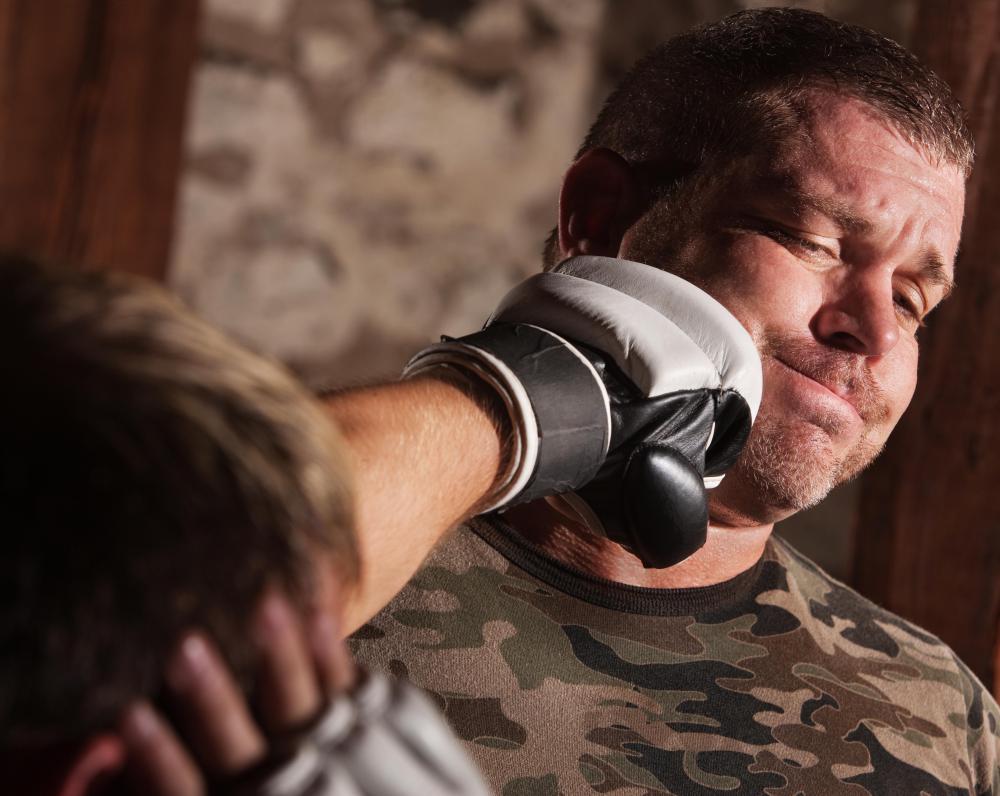At WiseGEEK, we're committed to delivering accurate, trustworthy information. Our expert-authored content is rigorously fact-checked and sourced from credible authorities. Discover how we uphold the highest standards in providing you with reliable knowledge.
What Are the Different Types of Prehospital Trauma Care?
Prehospital trauma care includes controlling bleeding, treating broken bones, managing pain, addressing shock, and treating burns or wounds. Opening and maintaining breathing airways might also be necessary, along with resuscitation. If a patient suffers a heart attack, cardiopulmonary resuscitation might be performed by the prehospital trauma care team.
Restricted airways represent a major cause of death from accidents or injuries. One of the first duties performed by prehospital trauma care personnel includes checking for breathing obstructions before lack of oxygen causes death or permanent brain damage. Most emergency medical technicians (EMTs) receive training to use suctioning equipment and provide oxygen orally or via nasal tubes.

Prehospital trauma care often requires treatment for shock, especially in patients suffering blood loss. EMTs typically assess vital signs, such as blood pressure, pulse, heart rate, and skin temperature, to evaluate for shock. They may start intravenous fluids to hydrate the patient while transporting him or her to a hospital. Emergency workers also treat hypothermia, a common complication of shock, by keeping the patient warm.

Trauma patients who are bleeding also need emergency care at the scene of an injury or accident. EMTs use manual pressure to control bleeding and tourniquets when medically necessary. They might pack deep wounds with sterile dressings to prevent excessive fluid loss. If patients suffer burns, a topical antibiotic might be applied to help prevent infection.

Broken bones are commonly treated with splints or slings to immobilize the limb. This might provide pain relief and prevent further damage to tissue. If an open wound accompanies a broken bone, EMTs typically treat bleeding at the site. When fractures involve the pelvic area, emergency workers commonly wrap the area to reduce movement during the ambulance ride.
Spinal injuries and head injuries require specific care to minimize loss of functioning. Emergency personnel typically place patients with spinal injuries onto a backboard and apply a cervical collar to prevent neurological damage. If a head injury needs treatment, EMTs usually assess the level of consciousness by checking reflexes and the size of the patient’s pupils. They also guard against aspiration if a patient vomits.
The World Health Organization (WHO) sets guidelines for prehospital trauma care, using standards for evaluation and treatment in emergencies. WHO reports many patients die before reaching the hospital for advanced care, and says that fatalities could be prevented via adequate trauma care at the scene. Guidelines define essential practices necessary to save lives and the basic equipment needed to perform emergency medical services.
AS FEATURED ON:
AS FEATURED ON:













Discuss this Article
Post your comments